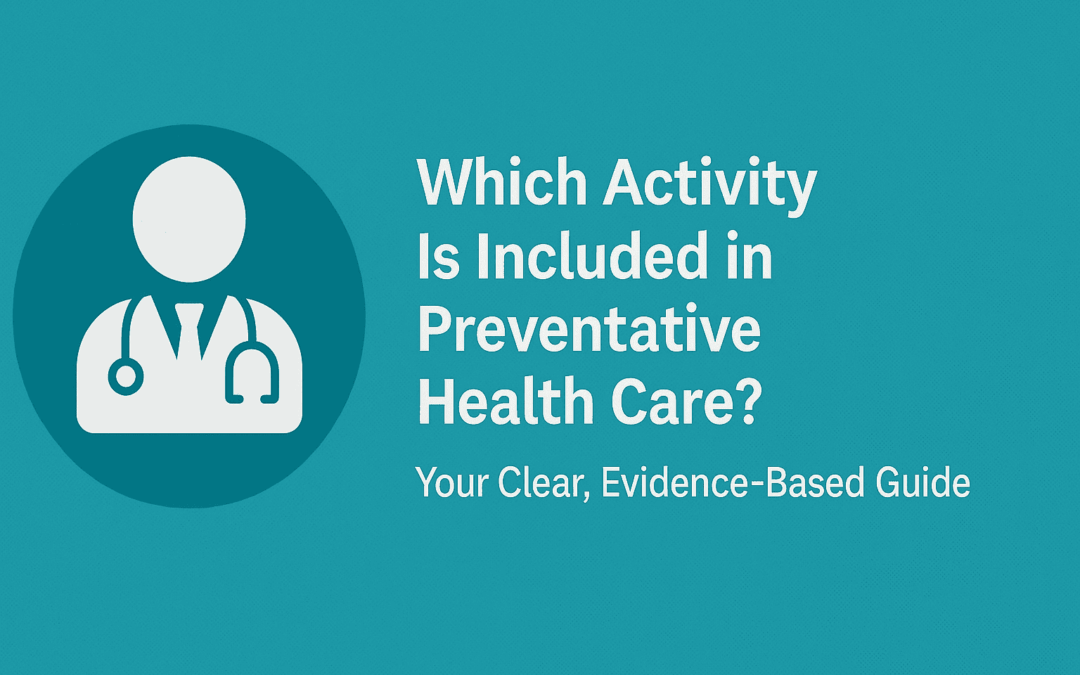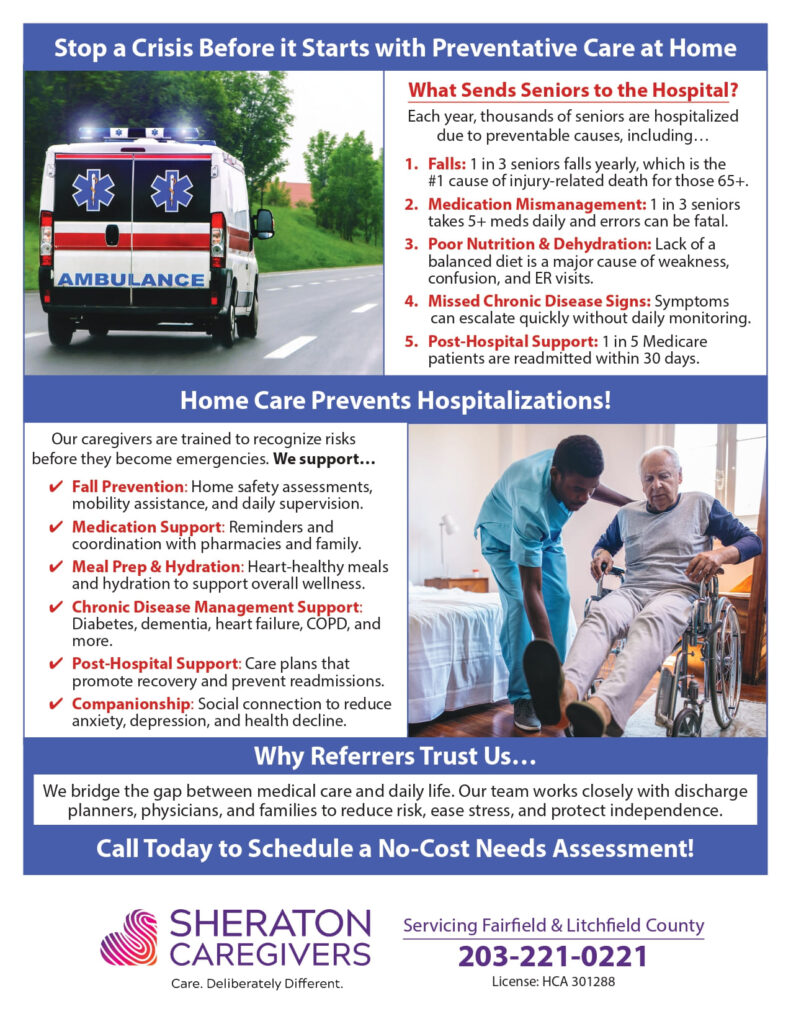TLDR
If you’re asking “which activity is included in preventative health care,” the short answer is: screenings, immunizations, counseling, and routine wellness planning. In practice, that means blood pressure and depression screening, cancer screenings (like colorectal), vaccines per the adult schedule, fall-prevention strategies, nutrition and tobacco counseling, and an annual wellness plan (for Medicare). These services are widely recommended by the U.S. Preventive Services Task Force (USPSTF), covered with no cost-sharing in most plans when in-network per HealthCare.gov, and laid out by CDC adult immunization schedules and Medicare wellness visit guidelines.
Introduction
Wondering which activity is included in preventative health care? Think of it as the essential actions you take before illness strikes: screenings to catch problems early, vaccines to prevent disease, counseling to cut risks, and a structured wellness plan to keep you on track.
Definition & Background: What “Preventative” Care Actually Means
In U.S. health policy, preventive (a.k.a. “preventative”) services are clinical activities designed to keep you healthy, find issues early, and reduce complications—including exams, shots, lab tests, screenings, and counseling/education. That’s the plain-English definition Medicare uses for beneficiaries. See Medicare’s “Preventive & screening services” overview. Preventive and screening services.
Why it matters: most marketplace and employer plans must cover a vetted list of USPSTF Grade A & B services, ACIP-recommended vaccines, and certain women’s/children’s services without cost-sharing as long as you use in-network providers.
Which Activity Is Included in Preventative Health Care? Start Here
Below are the core activity types you’ll see across U.S. guidelines, with trusted links to specifics.
1) Screenings (detect issues early)
- Blood pressure screening for adults (with confirmation outside the clinic before treatment). USPSTF Grade A. USPSTF hypertension screening.
- Depression screening in adults, including older adults; implement with systems for diagnosis and follow-up. USPSTF Grade B. USPSTF depression screening.
- Osteoporosis screening (DXA) for women 65+ and younger postmenopausal women with risk factors. USPSTF Grade B. USPSTF osteoporosis screening.
- Colorectal cancer screening for adults 45–75 (modalities include stool tests and colonoscopy); selective screening ages 76–85. USPSTF colorectal screening and CDC screening page.
Why screenings matter: Colorectal cancer remains a leading cause of cancer death in the U.S., but regular screening cuts cases and deaths. CDC colorectal cancer statistics and SEER data highlight the burden and age trends.
2) Immunizations (prevent disease outright)
Adults should follow the CDC’s Adult Immunization Schedule, which is updated annually (e.g., influenza, Tdap, shingles, pneumococcal, COVID-19 as indicated). CDC Adult Immunization Schedule (web page) and the current combined schedule PDF.
3) Counseling & Preventive Medications
Covered adult services commonly include tobacco cessation, alcohol misuse counseling, obesity screening/counseling, nutritional counseling for higher-risk adults, statins for primary prevention in certain groups, STI/HIV screening and prevention (e.g., PrEP when indicated).
4) Safety & Function (especially for older adults)
Fall-prevention is pivotal: more than one in four adults 65+ falls each year. Preventive steps include balance/strength activities, medication review, vision checks, and home safety modifications.
5) Annual Wellness Planning
For Medicare beneficiaries, the “Welcome to Medicare” and yearly Annual Wellness Visit create a personalized prevention plan, including a screening schedule, risk assessments (e.g., cognition, falls), and advance care planning. Welcome to Medicare preventive visit • Yearly “Wellness” visit.
Pros, Cons & Practical Fixes
Benefits you can expect
- Earlier detection & better outcomes. USPSTF A/B services are backed by evidence of high or moderate net benefit—that’s why they’re prioritized for coverage. USPSTF A & B recommendations.
- Disease prevention (not just detection). ACIP vaccine schedules prevent serious infections and their complications; Medicare/Marketplace rules support access
- Function & independence. Fall-risk reduction, balance training, and home safety checks lower injury risk—the leading cause of injury in older adults is falls.
Common hurdles—and how to solve them
- Coverage confusion: Not every service is free in every context. No-cost preventive care generally applies only in-network, and some services vary by age/risk. How to fix it: verify coverage using the adult preventive list and call your plan.
- “Do I really need this?” Over-testing can have downsides (false positives, unnecessary follow-ups). How to fix it: use the USPSTF pages to understand who benefits and how often, and decide with your clinician. USPSTF recommendation topics.
- Falling through the cracks: After a normal checkup, it’s easy to forget the next steps. How to fix it: if you have Medicare, book your Annual Wellness Visit and ask for a written screening schedule (a feature of the visit). Medicare yearly “Wellness” visit.
Research & Real-World Metrics You Can Use
- Activity targets: The federal Physical Activity Guidelines for Americans recommend at least 150 minutes/week of moderate activity plus muscle-strengthening and balance work for older adults—core prevention activities in their own right. HHS Physical Activity Guidelines and CDC guidance for older adults.
- Falls burden: Each year, 1 in 4 older adults reports a fall; falling once doubles the chance of falling again—powerful justification for balance training and home safety checks.
- Cancer screening impact: Routine colorectal screening is recommended age 45–75 and is linked to reduced incidence and mortality; it remains a major cause of cancer death when underscreened.
Putting It All Together: A Simple, Actionable Checklist
- Confirm coverage: Review adult preventive services and schedule in-network.
- Book your annual plan: If eligible, schedule your Medicare Annual Wellness Visit to get a personalized screening schedule.
- Get up-to-date on vaccines: Align with the CDC Adult Immunization Schedule.
- Don’t skip high-value screenings: Prioritize blood pressure, depression, osteoporosis (when indicated), and colorectal cancer per USPSTF. USPSTF A & B services.
- Protect function: Add balance/strength activities and a home safety review using CDC STEADI resources.
Conclusion
The best answer to “which activity is included in preventative health care” is a bundle: evidence-based screenings, vaccines, counseling/medications, safety and function checks, and a yearly wellness plan to keep it all coordinated. Start with your in-network coverage list, align with USPSTF and CDC recommendations, and book your next high-value item today. If you’d like hands-on support integrating these steps for an older adult, Sheraton Care can help coordinate appointments, reinforce healthy routines, and navigate benefits—so prevention actually happens, week after week.


